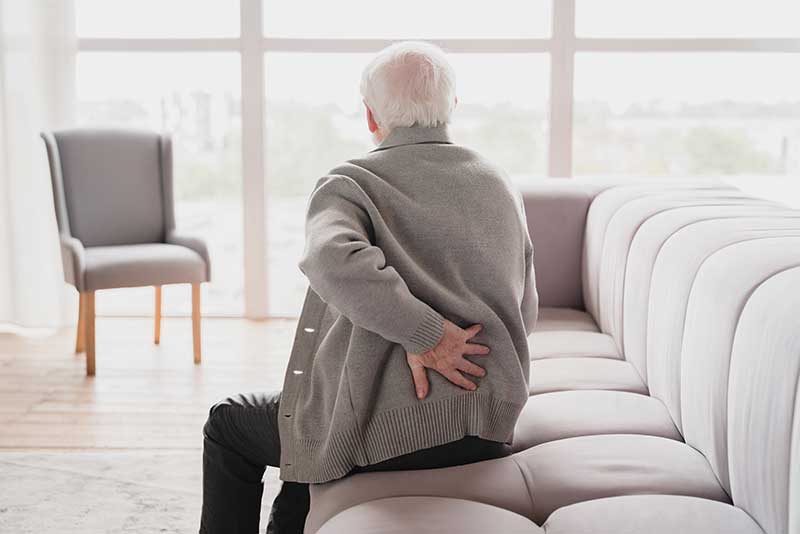Osteoarthritis (OA) is a degenerative joint disease that commonly affects older individuals and is characterized by pain, stiffness, and decreased mobility. In order for seniors to maintain an active and independent lifestyle, osteoarthritis management becomes crucial. Fortunately, a variety of treatment options are available to alleviate symptoms and improve the health of osteoarthritic seniors. In this blog, we will discuss some effective treatment strategies designed specifically for senior citizens, empowering them to combat the challenges of osteoarthritis and live a full life.
Medication Management
Medications play a crucial role in the management of osteoarthritis symptoms, particularly pain and inflammation. Nonsteroidal anti-inflammatory medications (NSAIDs) are frequently prescribed to treat joint pain and inflammation. Another option for pain relief is acetaminophen, which has fewer adverse effects than NSAIDs. In some instances, NSAID-containing topical lotions or gels can be used for localized pain relief. Before beginning any medication regimen, it is essential to counsel a healthcare professional to ensure suitability and minimize side effects.
Physical Therapy
Physical therapy is a cornerstone of osteoarthritis management, providing seniors with individualized exercise programs and techniques to enhance joint flexibility, strength, and balance. A physical therapist can direct senior citizens through exercises that target specific affected joints, including low-impact activities like swimming, stationary cycling, and tai chi. These exercises aid in the reduction of discomfort, expansion of range of motion, and improvement of general physical function. Physical therapy also teaches seniors proper body mechanics and posture in order to reduce joint tension and preserve joint health.
Assistive Devices
Assistive devices are indispensable for assisting seniors with osteoarthritis in their daily activities. Canes, walkers, and crutches aid in reducing joint burden and enhancing walking stability. Knee braces and shoe inserts can relieve joint pressure, thereby reducing discomfort and enhancing mobility. Moreover, ergonomic tools and adaptive aides, such as jar openers and button hooks, can make routine tasks less taxing on arthritic joints.
Weight Management
Maintaining a healthy weight is essential for osteoarthritis patients over the age of 65. Extra weight places additional stress on joints, thereby exacerbating joint pain and inflammation. A well-balanced diet and regular exercise can help seniors lose excess weight, reduce joint tension, and enhance overall joint function. A registered dietitian or nutritionist can provide personalized dietary advice for weight management and joint health when consulted.
Complementary Therapies
Several complementary therapies have demonstrated promise for managing osteoarthritis symptoms and enhancing quality of life. These consist of:
- Acupuncture is an ancient Chinese method of relieving pain and promoting healing by inserting thin needles into specific locations on the body. Acupuncture may alleviate osteoarthritis-related joint discomfort and increase mobility in elderly patients.
- The application of heat, such as warm towels or heating pads, can relax stiff joints and alleviate discomfort. In contrast, cold therapy, including the use of ice packs and cold compresses, can help reduce inflammation and edema.
- TENS therapy involves applying mild electrical currents to the affected area, which can disrupt pain signals and provide respite.
- Gentle massage techniques can assist seniors with osteoarthritis reduce muscle tension, enhance circulation, and alleviate pain.
Surgical Interventions
When conservative treatments fail to provide seniors with severe osteoarthritis with adequate alleviation, surgical interventions may be considered. Joint replacement surgery, such as hip or knee replacement, can substantially enhance joint mobility and alleviate joint pain. These procedures involve the replacement of damaged joint surfaces with artificial implants, allowing seniors to regain mobility and resume an active lifestyle. However, surgical interventions are typically considered a last resort and should be discussed in detail with a healthcare professional.
Conclusion
Managing osteoarthritis requires a multifaceted approach that combines various treatment strategies tailored to the specific requirements of senior citizens. Seniors can experience significant improvements in pain relief, joint mobility, and overall quality of life through medication management, physical therapy, assistive devices, weight management, complementary therapies, and, when necessary, surgical interventions. By remaining informed, seeking professional advice, and taking a proactive stance, seniors can navigate the challenges of osteoarthritis and continue to live an active and fulfilling life for many years.
